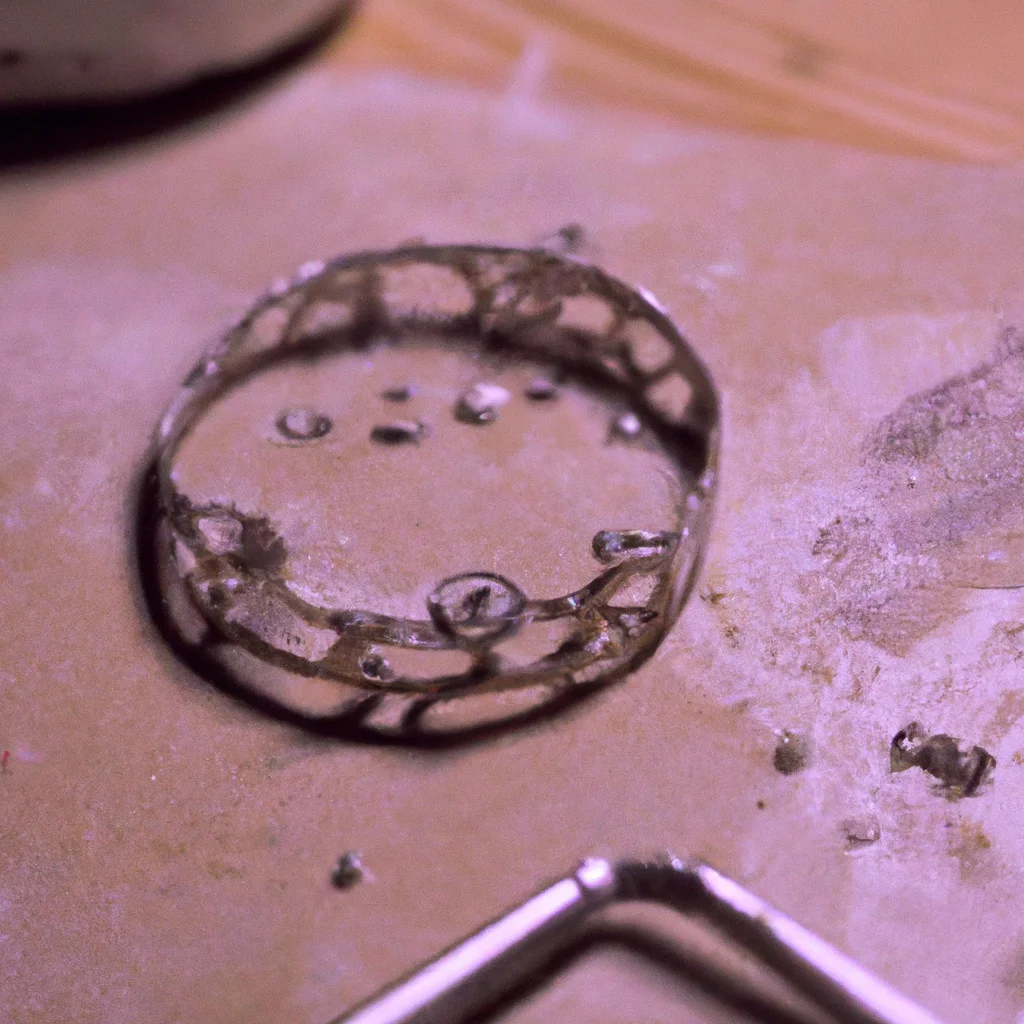What are the techniques involved in creating enamel painted jewelry?


What are the techniques involved in creating enamel painted jewelry?
Enamel painted jewelry is a form of jewelry that involves the application of enamel on metal surfaces to create intricate designs. This technique has been used in jewelry making for centuries and has seen a resurgence in popularity in recent years. Enamel jewelry making requires a high degree of skill and artistry, as well as specialized tools and materials. In this article, we will explore the techniques involved in creating enamel painted jewelry, including enamel artistry, jewelry techniques, enamel jewelry design, and enamel jewelry making.
Enamel Artistry Techniques
Enamel artistry is the process of applying enamel to a metal surface to create color and design. The enamel is made from a mixture of glass powder and metal oxides, which is applied to the metal surface and then fired in a kiln at high temperatures to fuse the enamel to the metal. There are several enamel artistry techniques that can be used to create different effects, including:
1. Cloisonné – This technique involves creating compartments on the metal surface with thin metal wires, which are then filled with enamel. The wires act as a barrier to keep the different colors of enamel separate, creating a multi-colored design.
2. Champlevé – This technique involves carving out recesses in the metal surface, which are then filled with enamel. The recessed areas can be polished or textured to create different effects.
3. Plique-à-jour – This technique involves creating a design with thin metal wires that are filled with translucent enamel. The enamel is fired in a kiln without a backing, creating a stained glass effect.
Jewelry Techniques
Enamel painted jewelry requires specialized jewelry techniques to create the metal base that will hold the enamel. These techniques include:
1. Soldering – This is the process of joining metal pieces together with heat and a metal alloy. In enamel jewelry making, soldering is used to create the metal base for the enamel.
2. Filigree – This is the process of creating a design with thin metal wires that are twisted and bent into intricate patterns. Filigree work can be used as a base for enamel, creating a delicate and intricate design.
3. Etching – This is the process of using chemicals to remove layers of metal to create a design. Etching can be used to create a base for enamel or to add texture to the metal surface.
Enamel Jewelry Design
Enamel painted jewelry design involves creating a concept for the jewelry piece and then translating it into a design that can be executed with enamel. Some enamel jewelry design techniques include:
1. Sketching – This is the process of drawing out the design of the jewelry piece. Sketching allows the designer to visualize the final piece and make changes before starting work on the metal base.
2. Color Theory – Enamel jewelry design requires an understanding of color theory to create a harmonious color palette. The designer must choose colors that will work well together and create a pleasing design.
3. Enamel Application – The enamel must be applied to the metal surface in a way that creates the desired effect. This involves using different enamel artistry techniques to create the design and layering different colors of enamel to create depth and texture.
Enamel Jewelry Making
Enamel jewelry making involves combining the enamel artistry techniques, jewelry techniques, and enamel jewelry design to create a finished piece of jewelry. The process includes:
1. Preparing the Metal Base – The metal base must be cleaned and prepared for the enamel application. This involves polishing the metal surface and preparing any filigree or etched designs.
2. Applying the Enamel – The enamel is applied to the metal surface using different enamel artistry techniques. The enamel must be applied in thin layers and fired in a kiln between each layer to ensure a strong bond.
3. Finishing the Jewelry Piece – Once the enamel has been applied and fired, the jewelry piece must be finished. This involves cleaning the metal surface to remove any firing residue and polishing the enamel to create a smooth and shiny surface.
Conclusion
Enamel painted jewelry is a beautiful and intricate form of jewelry that requires a high degree of skill and artistry. Enamel artistry techniques, jewelry techniques, enamel jewelry design, and enamel jewelry making are all important aspects of creating enamel painted jewelry. By understanding these techniques and combining them in a thoughtful and creative way, jewelry designers can create stunning enamel jewelry pieces that are both beautiful and unique.
Recent Posts
How do I create an engaging and informative online quiz or assessment?
Creating an engaging and informative online quiz or assessment can be a powerful tool for… Read More
What are the most effective methods for managing and reducing work-related stress in the hospitality industry?
Work-related stress is a common issue in the hospitality industry, where employees often face long… Read More
How can I improve my assertiveness and communication skills in a leadership position?
In a leadership position, assertiveness and effective communication skills are crucial for success. Being able… Read More
What are the key elements of a successful employee recognition and rewards program?
Employee recognition and rewards programs play a crucial role in motivating and engaging employees, as… Read More
How do I effectively manage and respond to customer feedback and reviews?
Customer feedback and online reviews play a crucial role in shaping a company's reputation and… Read More
What are the best strategies for effective time management as a stay-at-home parent?
Effective time management is crucial for stay-at-home parents who juggle multiple responsibilities on a daily… Read More